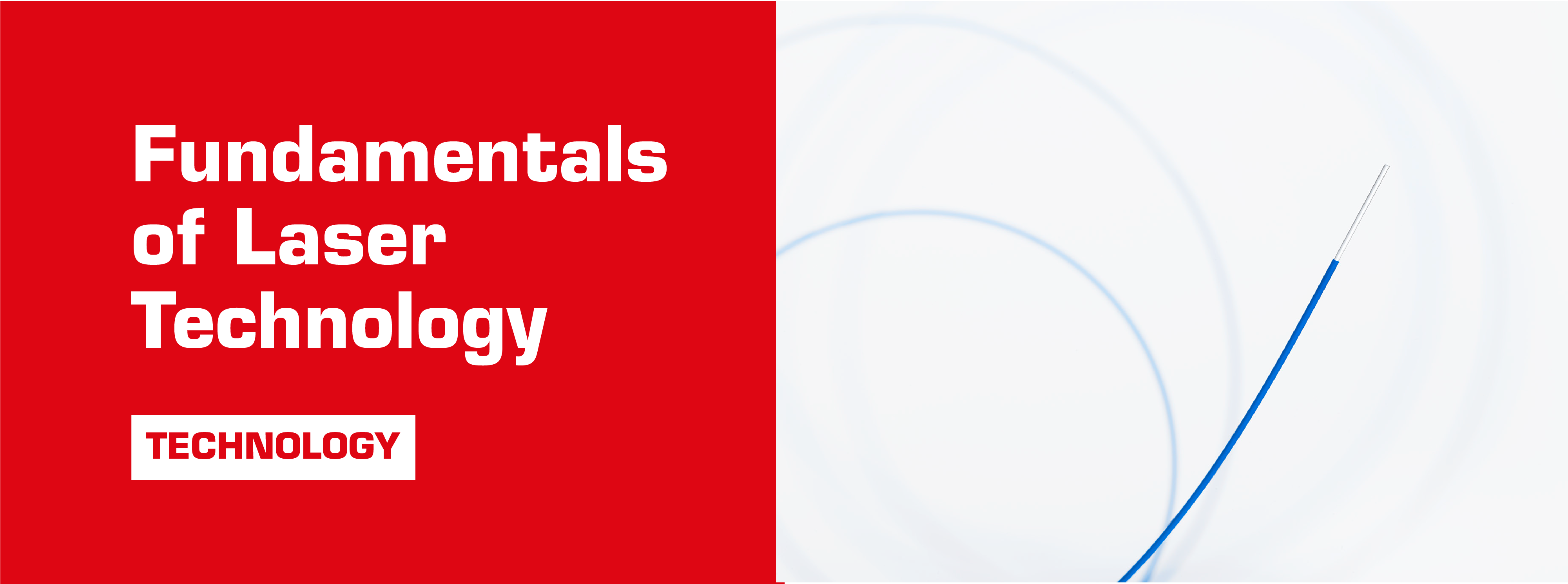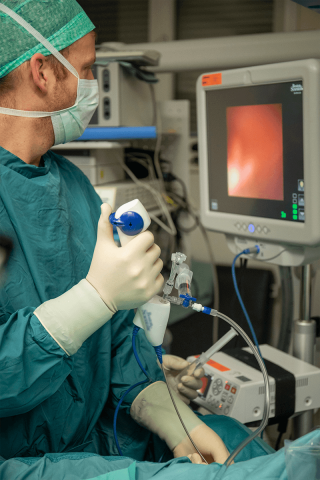
Theory and guiding principles of laser technology
Lasers stimulate atoms or molecules to emit coherent light at specific wavelengths. Its subsequent amplification produces a powerful thin beam of radiation.
Laser technology is based on the ability of a device to emit a narrow beam of highly focused light. In each LASER (Light Amplification by Stimulated Emission of Radiation) system, the laser medium defines the wavelength. Parallel radiation coming out from the device is easy to focus on a target due to its small focus and high intensity.
Facts about laser technology:
- There are two possible laser modes of action - pulsed and continuous wave mode. Pulsed lasers are frequently used in medicine, especially in endourology.
- Various divergence angles enable the adjustment of laser focus to appropriate target sizes.
- Available modifications of the laser tip allow adjusting the laser distribution to the targeted area, e.g. bladder or prostate.

Laser technology in urology
Depending on various laser parameters and tissue characteristics, we can achieve different effects, including specific distribution of light and heat, chemical reaction, material ablation, ionization or shockwaves. Provided that, there are numerous medical applications of lasers such as biomodulation, photodynamic therapy (allows for fluorescent imaging of tumors located in the urinary tract and performance of more accurate biopsies), coagulation, vaporization (e.g. of prostate neoplasia), fusion, ablation, disruption and fragmentation (used for ureteric and kidney stone management).
Urology is a highly demanding, challenging and dynamically developing field of medicine, hence it is paramount that urologists rely on adaptable and modifiable lasers. Different clinical scenarios usually require easily adjustable device settings such as pulse energies, pulse lengths and emitted frequencies. However, it should be highlighted that laser systems can cause serious complications and damage if used improperly. Therefore a laser system has to be intuitively modifiable according to the intended procedure.
Don't forget that light could be dangerous - use the technology in an appropriate way. Increase your awareness by listening to an excellent explanation of laser technology. Click here to watch the webinar by Prof. Oliver Traxer
Clinical applications of laser technology in urology
Decades of successful therapeutic use in urology have established lasers as an extremely valuable tool. Innovative features and solutions are further expanding their clinical applications.
Learn about clinical applications of lasers
More information about EMS laser technologies


